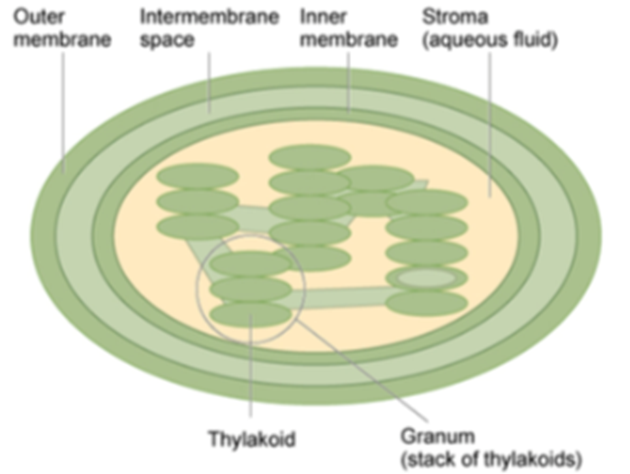Receptor tyrosine kinases (RTKs) are found at high levels on various cancer cells. A protein, Herceptin, has been found to bind to an RTK known as HER2. This information can now be utilized in breast cancer treatment if which of the following is true?
A) If Herceptin is found in the breast lymph nodes of the patient.
B) If HER2, administered by injection, is in sufficient concentration.
C) If the patient's cancer cells have detectable HER2.
D) If the patient's genome codes for the HER2 receptor.
E) If the patient's genome codes for the manufacture of Herceptin.
Ans: C) If the patient's cancer cells have detectable HER2.
You might also like to view...
What is the organelle shown in this diagram?

a. mitochondrion
b. ribosome
c. chloroplast
d. Golgi apparatus
Which of the following statements concerning the inheritance of a dominant trait is true?
A) Every affected person must have at least one affected parent. B) The trait is observed to skip generations. C) An affected heterozygote will transmit the allele to all of his or her offspring. D) Nonaffected parents can have affected offspring. E) The trait is passed along paternal lines.
A researcher is setting up an experiment to measure basal metabolic rate in prairie voles (Microtus ochrogaster–a small rodent)
Which of the following would be the best set of conditions for the voles immediately before and during the measurement? A) House the animals in a cage with plenty of food and water to avoid stress; conduct measurements in a warmer room than the room where housed. B) House the animals in a cage with plenty of food and water to avoid stress; conduct measurements in a room the same temperature as the room where housed. C) House the animals in a cage with no food for a few hours before measurement; conduct measurements in a colder room than the room where housed, and exercise the voles. D) House the animals in a cage with no food for a few hours before measurement; conduct measurements in a room the same temperature as the room where housed.
A childhood illness caused by a herpesvirus and characterized by a "rosy" rash all over the body is known as
A) chickenpox. B) kissing disease. C) CMV. D) monkeypox. E) roseola.